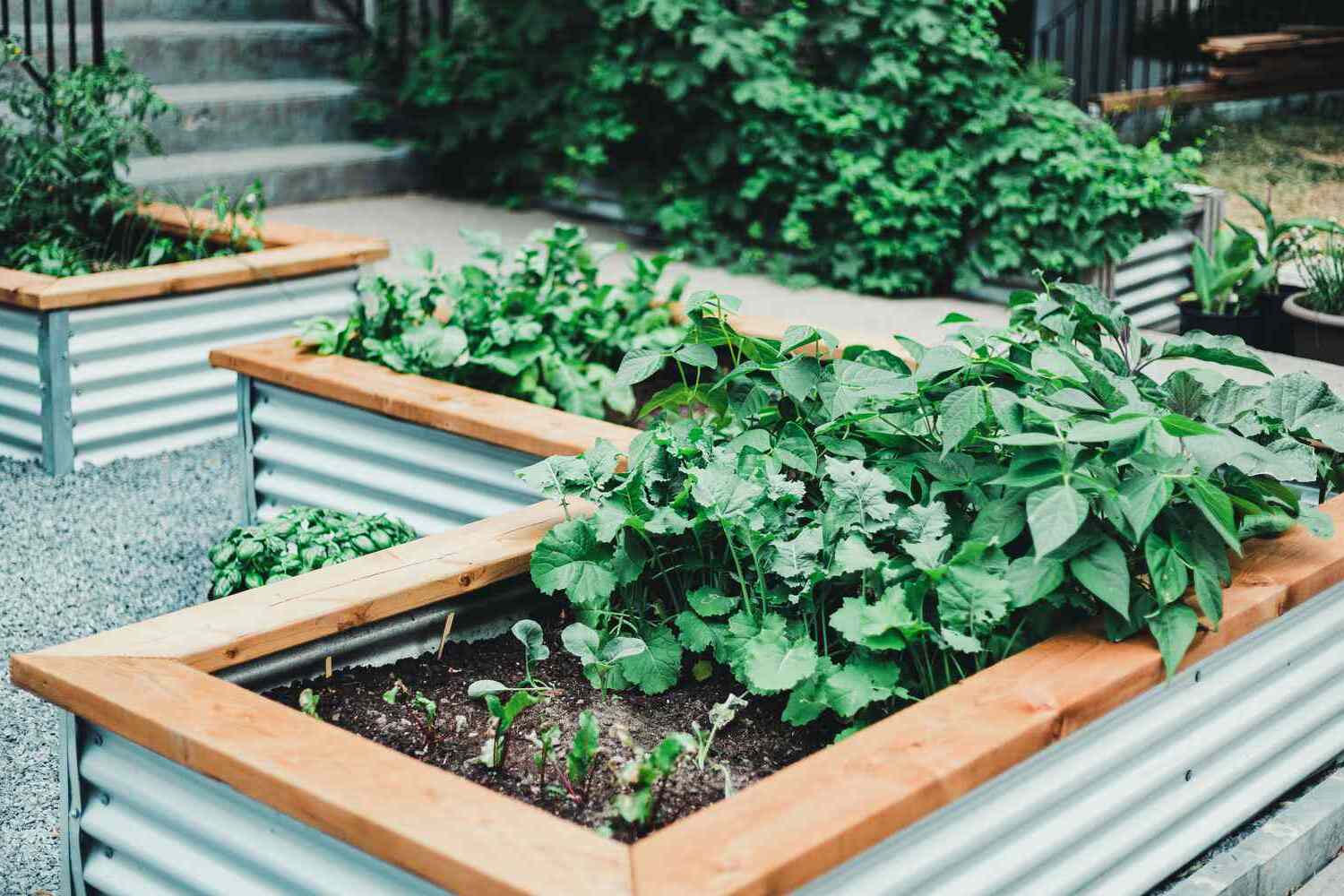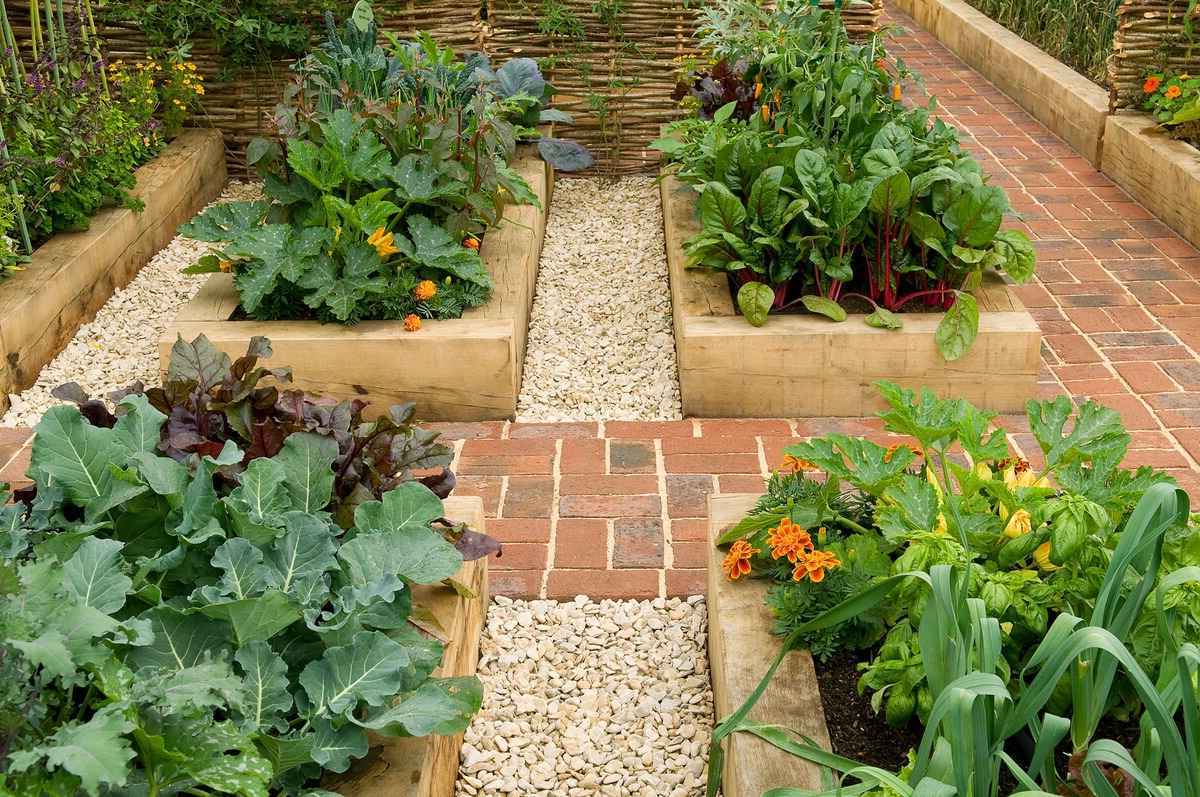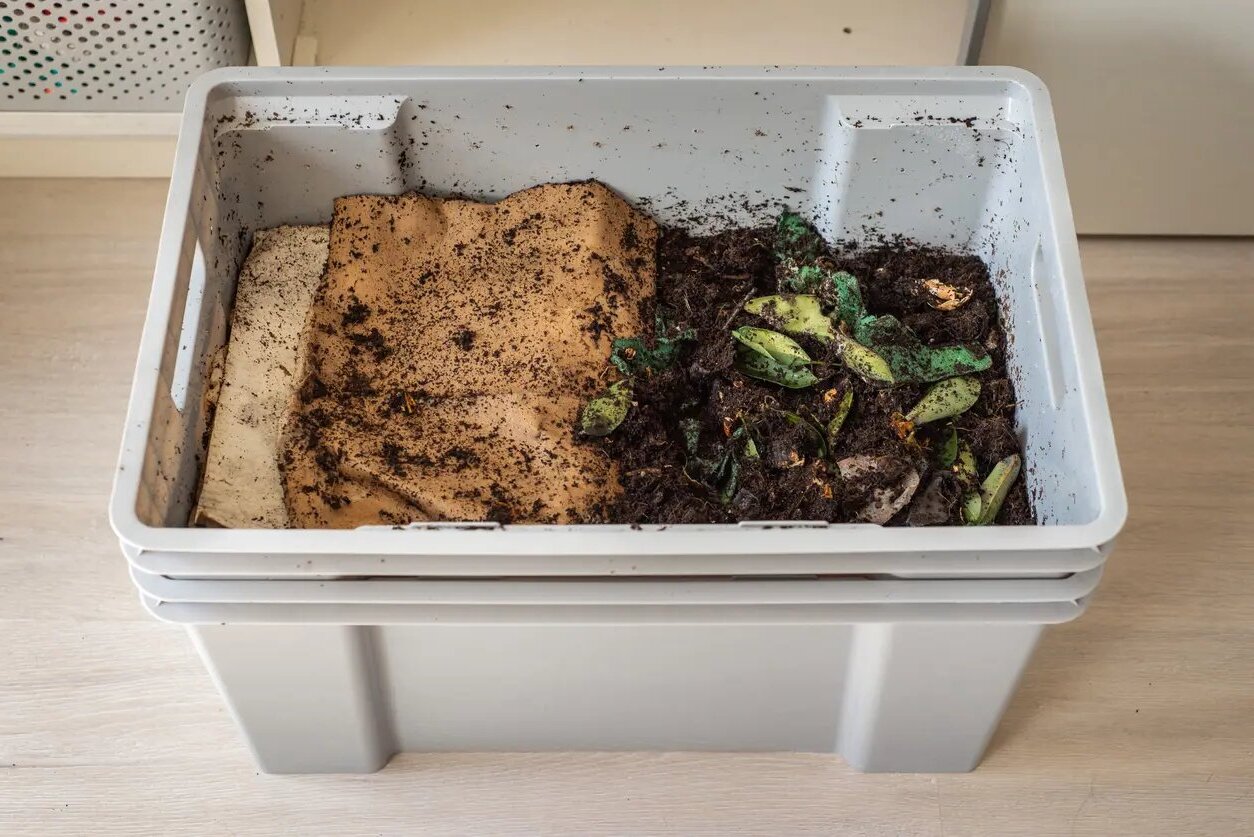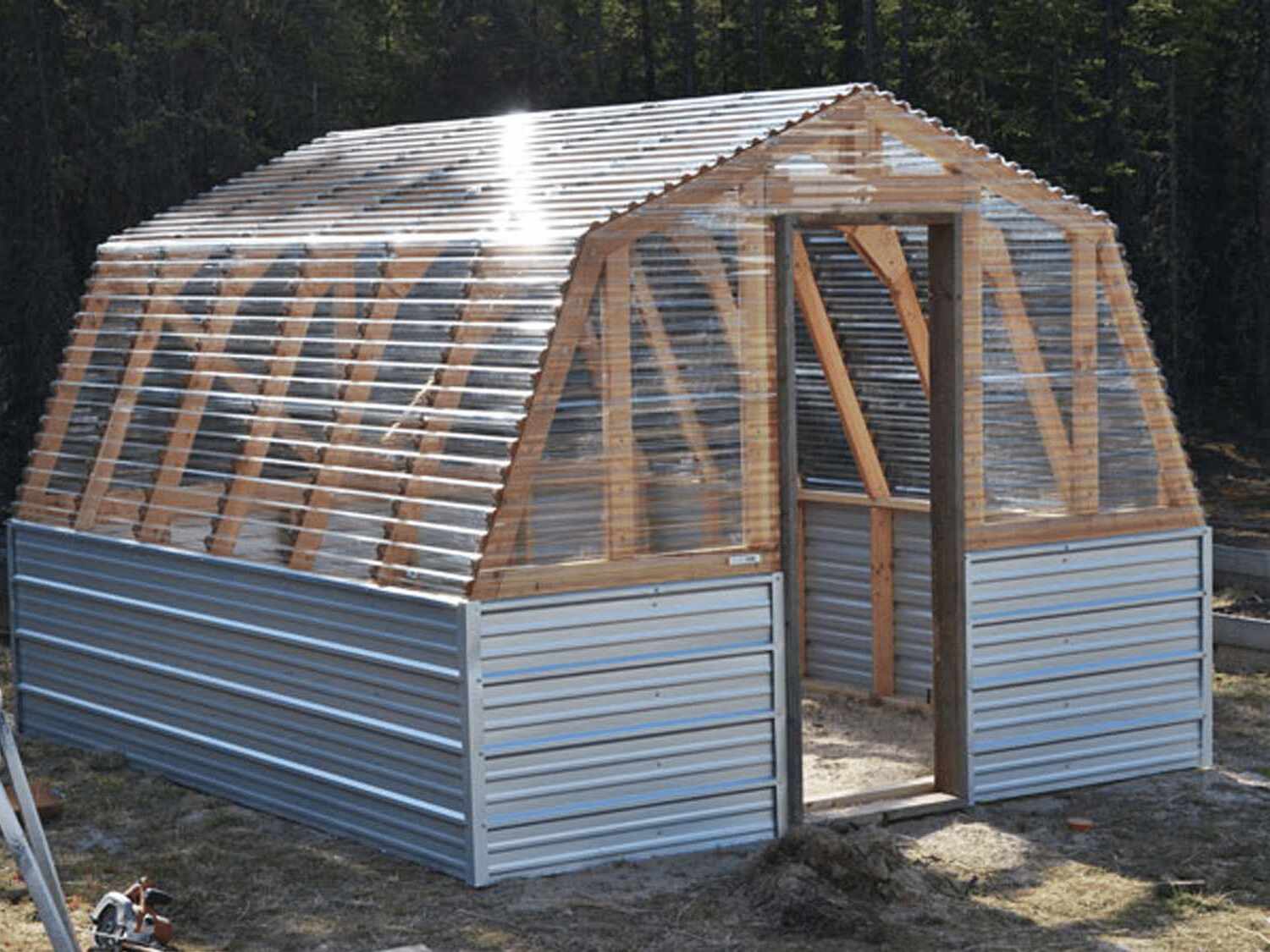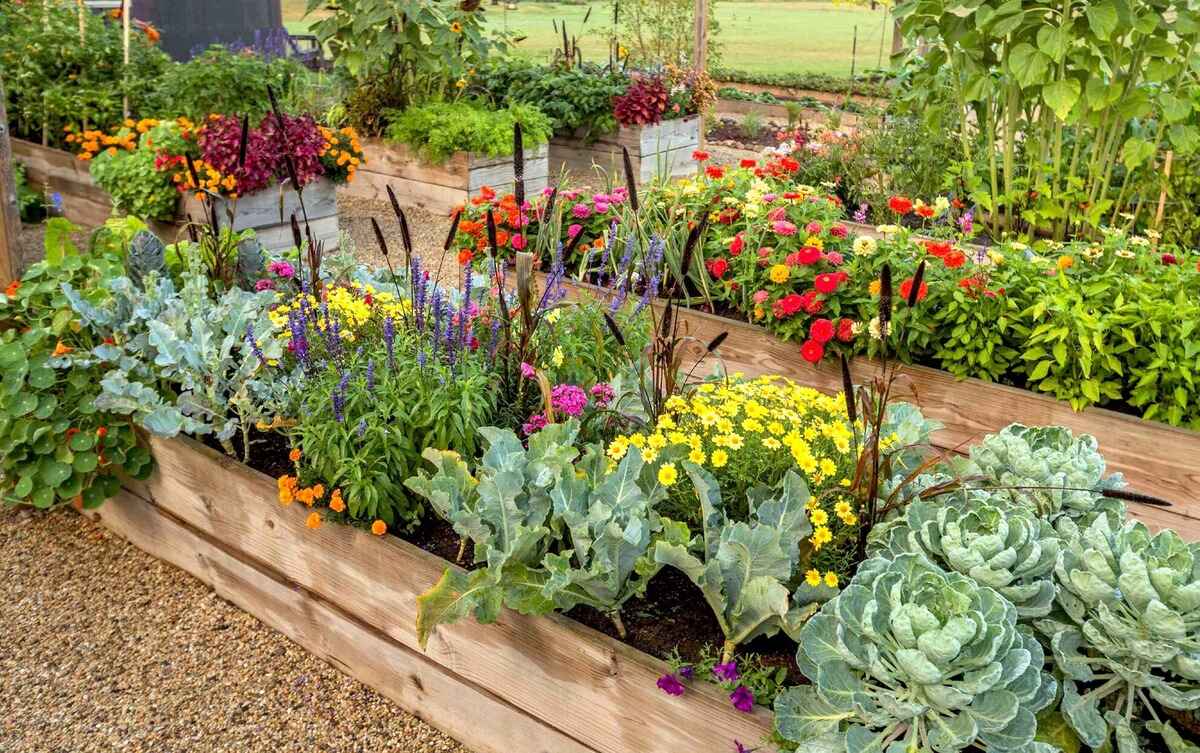Home>Outdoors & Camping>Landscaping>How To Start A Vegetable Garden
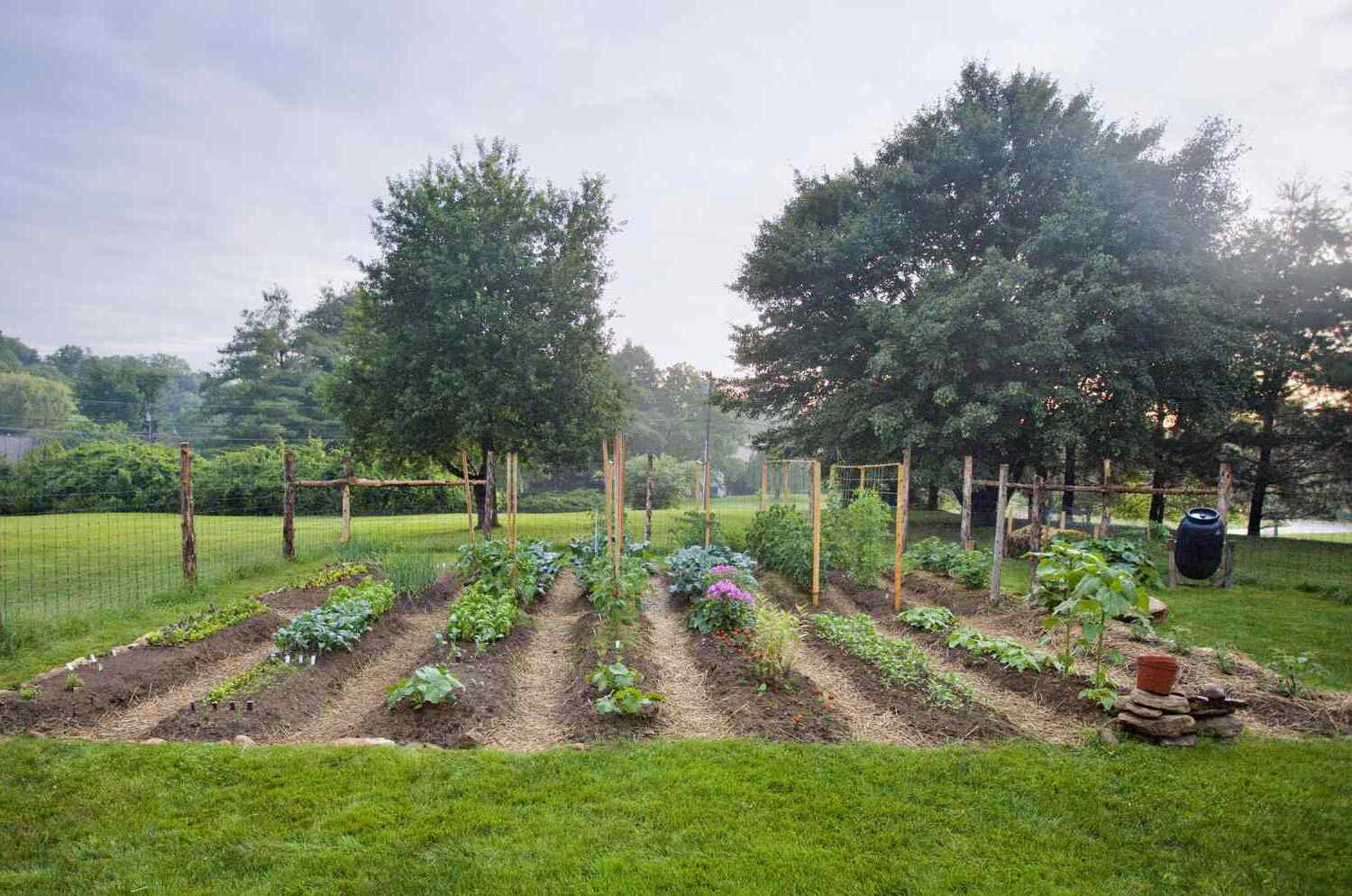

Landscaping
How To Start A Vegetable Garden
Published: March 7, 2024

Content Creator for Outdoors & Camping, Sophie turns any yard into a sustainable paradise. Her dedication to DIY outdoor projects and volunteer work in community gardens shares joy and knowledge.
Learn how to start a vegetable garden with expert landscaping tips. Create a beautiful and productive garden with our step-by-step guide.
(Many of the links in this article redirect to a specific reviewed product. Your purchase of these products through affiliate links helps to generate commission for Twigandthistle.com, at no extra cost. Learn more)
Benefits of Growing Your Own Vegetables
Are you considering starting your own vegetable garden? There are numerous benefits to growing your own vegetables, from the satisfaction of producing your own food to the health and environmental advantages. Here are some compelling reasons to roll up your sleeves and get started:
-
Fresh and Nutritious Produce: When you grow your own vegetables, you have access to fresh, nutritious produce right in your backyard. You can pick your vegetables at the peak of ripeness, ensuring that you get the maximum nutritional benefits from your harvest.
-
Cost Savings: Growing your own vegetables can lead to significant cost savings. By investing a little time and effort upfront, you can enjoy a bountiful harvest without the need to constantly purchase produce from the grocery store.
-
Environmental Benefits: Homegrown vegetables are often produced using fewer pesticides and chemicals than commercially grown produce. By growing your own vegetables, you can reduce your environmental impact and contribute to a healthier planet.
-
Physical Activity and Stress Relief: Gardening is a great way to get some exercise and fresh air. It can also be a therapeutic and stress-relieving activity, allowing you to unwind and connect with nature.
-
Flavor and Variety: Homegrown vegetables often have superior flavor compared to store-bought produce. Additionally, you have the freedom to choose from a wide variety of vegetables that may not be readily available at the grocery store.
-
Educational Opportunities: For families, a vegetable garden can be an excellent educational tool. Children can learn about the plant life cycle, the importance of healthy eating, and the satisfaction of growing their own food.
-
Community Building: Sharing your homegrown vegetables with friends, family, and neighbors can foster a sense of community and connection. It's a great way to spread the joy of gardening and healthy eating with those around you.
By starting your own vegetable garden, you can enjoy these benefits while cultivating a deeper connection to the food you eat and the environment around you.
Read more: How to Create a DIY Kitchen Garden
Choosing the Right Location for Your Garden
Selecting the right location for your vegetable garden is crucial for the success of your plants. Here are some key factors to consider when choosing the perfect spot for your garden:
-
Sunlight: Ensure that your chosen location receives an adequate amount of sunlight. Most vegetables require at least 6-8 hours of direct sunlight daily to thrive. Observe the area throughout the day to determine the sunniest spots, as this will be where you'll want to plant your sun-loving vegetables like tomatoes, peppers, and cucumbers.
-
Access to Water: Proximity to a water source is essential for easy irrigation. Consider the convenience of watering your plants when selecting the garden location. If you have to rely on a hose, ensure that it can reach all areas of the garden without difficulty.
-
Soil Quality: Assess the soil quality in different areas of your yard. Look for well-draining soil that is rich in organic matter. Avoid areas with compacted or waterlogged soil, as this can hinder root growth and lead to poor plant development.
-
Protection from Wind: While some airflow is beneficial, excessively windy areas can damage young plants and dry out the soil. Choose a location that provides some natural protection from strong winds, such as near a fence or hedgerow.
-
Proximity to the House: Consider the proximity of your garden to your home. Having the garden within easy reach makes it more convenient to tend to and monitor your plants regularly. Additionally, being close to the house can make it easier to harvest fresh produce for meals.
-
Space and Expansion: Ensure that the chosen location provides enough space for your desired garden size. Consider the potential for expansion if you plan to increase the size of your garden in the future.
-
Pest Control: Evaluate the presence of pests in different areas of your yard. Choose a location that is less prone to pest infestations, such as away from areas with standing water or dense vegetation.
By carefully considering these factors, you can select an ideal location for your vegetable garden that promotes healthy plant growth and simplifies the gardening process.
Selecting the Best Vegetables to Grow
When it comes to selecting the best vegetables to grow in your garden, it's essential to consider your local climate, available space, and personal preferences. Here are some popular and beginner-friendly vegetables that are well-suited for home gardens:
-
Tomatoes: Tomatoes are a favorite among home gardeners due to their versatility and abundant yield. They thrive in sunny locations and can be grown in containers or traditional garden beds.
-
Lettuce: Lettuce is a fast-growing and low-maintenance vegetable that is perfect for beginners. It can be harvested continuously for fresh salads throughout the growing season.
-
Bell Peppers: Bell peppers come in a variety of colors and are relatively easy to grow. They require ample sunlight and well-draining soil to flourish.
-
Zucchini: Zucchini plants are prolific producers, making them a rewarding choice for home gardens. They require ample space to spread out and regular harvesting to promote continuous growth.
-
Green Beans: Green beans are a great option for gardeners with limited space. They can be grown vertically, making them suitable for small gardens or containers.
-
Carrots: Carrots are a root vegetable that thrives in loose, well-draining soil. They are a great addition to any garden and can be harvested at different stages of growth for varying sizes.
-
Cucumbers: Cucumbers are known for their refreshing flavor and are relatively easy to grow. They require consistent moisture and a trellis or support for vertical growth.
-
Radishes: Radishes are fast-growing and can be ready for harvest in as little as three weeks. They are a great option for gardeners looking for quick results.
-
Spinach: Spinach is a nutritious leafy green that prefers cooler temperatures. It can be grown in early spring or late summer for a continuous harvest.
-
Herbs: Herbs such as basil, parsley, and mint are excellent additions to any vegetable garden. They are versatile, compact, and can be grown in containers or alongside other vegetables.
When selecting vegetables for your garden, consider the space available, the amount of sunlight your garden receives, and the specific growing requirements of each plant. By choosing a variety of vegetables that suit your preferences and growing conditions, you can create a diverse and rewarding garden that provides an abundance of fresh produce.
Preparing the Soil for Planting
Before planting your vegetable garden, it's crucial to prepare the soil to provide an optimal growing environment for your plants. Here's a step-by-step guide to preparing the soil for planting:
-
Clear the Area: Begin by clearing the selected area of any debris, weeds, or rocks. This will create a clean slate for your garden and prevent competition for nutrients and water.
-
Test the Soil: Use a soil testing kit to assess the pH level and nutrient content of the soil. This will help you determine if any amendments are needed to create an ideal growing environment for your vegetables.
-
Add Organic Matter: Incorporate organic matter such as compost, well-rotted manure, or leaf mold into the soil. Organic matter improves soil structure, enhances drainage, and provides essential nutrients for plant growth.
-
Till the Soil: Use a garden tiller or a hand tool to till the soil to a depth of 8-12 inches. This process helps loosen compacted soil, improve aeration, and create a welcoming environment for plant roots.
-
Address Soil Compaction: If the soil is compacted, consider using a broadfork or a garden fork to aerate the soil. Aerating the soil promotes better water infiltration and root development.
-
Incorporate Fertilizer: Based on the results of your soil test, add any necessary fertilizers or soil amendments to address nutrient deficiencies. Choose organic or slow-release fertilizers for sustainable and long-term soil health.
-
Create Raised Beds (Optional): If you prefer raised bed gardening, construct raised beds and fill them with a mixture of topsoil and compost. Raised beds provide better drainage, warmer soil temperatures, and can be particularly beneficial for areas with poor soil quality.
-
Mulch the Soil: Apply a layer of organic mulch, such as straw or wood chips, to the soil surface. Mulch helps retain moisture, suppresses weed growth, and moderates soil temperature.
By following these soil preparation steps, you can create a fertile and well-balanced growing environment for your vegetable garden. Healthy soil is the foundation for robust plant growth and a successful harvest.
Planting and Caring for Your Vegetable Garden
Once the soil is prepared, it's time to plant your vegetable garden and provide the care it needs to thrive. Here's a detailed guide on planting and nurturing your vegetable garden:
Read more: How to Build a Basement Root Cellar
Planting Seeds or Seedlings
- Follow the planting instructions on seed packets or plant tags to determine the appropriate spacing and depth for each vegetable.
- For seeds, create furrows or individual planting holes according to the recommended spacing and sow the seeds at the appropriate depth.
- When planting seedlings, gently remove them from their containers and transplant them into the prepared soil at the recommended spacing.
Watering
- Provide consistent moisture to newly planted seeds and seedlings. Water the garden gently to avoid disturbing the soil and ensure that the water reaches the root zone.
- Monitor the soil moisture regularly and adjust your watering schedule based on the specific needs of each vegetable. Aim to keep the soil consistently moist but not waterlogged.
Mulching
- Apply a layer of organic mulch around the base of plants to help retain soil moisture, suppress weed growth, and regulate soil temperature. Mulch also provides a protective barrier for the roots of your vegetables.
Fertilizing
- Consider using a balanced, slow-release fertilizer to provide essential nutrients to your plants throughout the growing season. Follow the recommended application rates and avoid over-fertilizing, which can lead to excessive foliage growth at the expense of fruit production.
Read more: How To Build A Steam Room
Supporting Plants
- Some vegetables, such as tomatoes, cucumbers, and pole beans, may require support for upright growth. Install stakes, trellises, or cages to provide structural support and promote proper air circulation around the plants.
Pruning and Thinning
- Regularly inspect your plants for any signs of overcrowding, disease, or pest infestations. Prune or thin out overcrowded areas to improve air circulation and reduce the risk of fungal diseases.
Pest and Disease Management
- Keep a close eye on your garden for signs of pests and diseases. Implement integrated pest management strategies, such as hand-picking pests, using natural predators, and applying organic pest control methods when necessary.
Harvesting
- Monitor the progress of your vegetables and harvest them at the peak of ripeness for the best flavor and nutritional content. Regular harvesting also encourages continuous production from many vegetable plants.
Read more: How To Build A Putting Green In Backyard
Seasonal Care
- As the seasons change, adjust your gardening practices accordingly. Protect your plants from extreme temperatures, provide shade during heatwaves, and extend the growing season with row covers or cold frames in cooler weather.
By following these planting and care guidelines, you can nurture a thriving vegetable garden and enjoy a bountiful harvest of fresh, homegrown produce.
Dealing with Common Pests and Diseases
Dealing with common pests and diseases is an essential aspect of maintaining a healthy and productive vegetable garden. Here are some effective strategies for identifying, preventing, and managing common garden pests and diseases:
Pest Identification
- Regularly inspect your plants for signs of pest damage, including chewed leaves, holes, discoloration, or the presence of insects.
- Familiarize yourself with common garden pests such as aphids, caterpillars, slugs, snails, and beetles, as well as their specific damage patterns.
Natural Predators
- Encourage natural predators such as ladybugs, lacewings, and predatory wasps to help control pest populations in your garden.
- Planting flowers such as marigolds, alyssum, and dill can attract beneficial insects that prey on garden pests.
Read more: How To Start A Garden
Companion Planting
- Utilize companion planting techniques to deter pests and attract beneficial insects. For example, planting aromatic herbs like basil and rosemary alongside vegetables can help repel pests.
Organic Pest Control
- Use organic pest control methods such as neem oil, insecticidal soap, and diatomaceous earth to manage pest infestations while minimizing harm to beneficial insects and the environment.
Disease Prevention
- Practice good garden hygiene by removing and disposing of any diseased plant material to prevent the spread of diseases.
- Avoid overhead watering to minimize the risk of fungal diseases, and water the soil at the base of plants instead.
Crop Rotation
- Implement a crop rotation plan to prevent the buildup of soil-borne diseases. Rotate crops within different plant families to disrupt pest and disease cycles.
Read more: How To Build A Pond
Resistant Varieties
- Select vegetable varieties that are resistant to common diseases prevalent in your area. Resistant varieties can help minimize the impact of diseases on your garden.
Early Intervention
- Act promptly at the first sign of pest or disease issues. Handpick pests, prune affected plant parts, and apply appropriate treatments to prevent the problem from escalating.
Integrated Pest Management
- Adopt an integrated pest management (IPM) approach, which combines cultural, biological, and mechanical control methods with the judicious use of pesticides as a last resort.
By implementing these proactive and preventive measures, you can effectively manage common pests and diseases in your vegetable garden, promoting the health and vitality of your plants while minimizing the need for chemical interventions.
Harvesting and Enjoying Your Homegrown Vegetables
The culmination of your hard work in the vegetable garden is the rewarding process of harvesting and savoring the fruits of your labor. Here's a comprehensive guide to harvesting and relishing your homegrown vegetables:
Read more: How To Build A Compost Bin
Timing and Readiness
- Monitor the progress of your vegetables and familiarize yourself with the signs of readiness for each type of vegetable. This may include changes in color, size, or firmness, as well as the specified days to maturity for different varieties.
Harvesting Techniques
- Use sharp garden shears, pruners, or a knife to harvest vegetables such as tomatoes, peppers, and cucumbers, ensuring clean cuts that minimize damage to the plant.
- For leafy greens and herbs, utilize the "cut and come again" method, where you harvest outer leaves or stems, allowing the plant to continue producing fresh growth.
Gentle Handling
- Handle harvested vegetables with care to prevent bruising or damage. Avoid dropping or roughly handling delicate produce to maintain its quality and shelf life.
Continuous Harvesting
- Regularly harvest ripe vegetables to encourage continuous production. Promptly picking mature produce also prevents overripening, which can signal the plant to stop producing.
Read more: How To Make A Compost Pile
Enjoying Freshness
- Immediately enjoy the freshness of your homegrown vegetables by incorporating them into your meals. Whether it's a vibrant salad, a flavorful stir-fry, or a refreshing snack, savor the taste of freshly harvested produce.
Storage and Preservation
- For surplus harvest, explore various methods of preserving your vegetables, such as canning, freezing, pickling, or dehydrating. These techniques allow you to enjoy your homegrown produce throughout the year.
Sharing the Bounty
- Share the abundance of your harvest with friends, family, and neighbors. It's a wonderful way to spread the joy of homegrown vegetables and foster a sense of community.
Reflecting on the Journey
- Take a moment to appreciate the journey from seed to harvest. Reflect on the satisfaction of nurturing your plants and the joy of reaping the rewards of your efforts.
Read more: How To Make A Flower Bed
Planning for the Next Season
- As you enjoy the fruits of your current harvest, start planning for the next season. Consider crop rotation, new varieties to try, and any adjustments to improve the productivity of your vegetable garden.
By embracing the process of harvesting and relishing your homegrown vegetables, you can fully appreciate the benefits of cultivating your own produce and the joy of connecting with nature through gardening.

